Cultivation of some amazing Rare Hardy Succulents

As an Amazon Associate I earn from qualifying purchases.
Other links on this site may lead to other companies that I’m associated with.
Jovibarba heuffelii are the odd plant out – related to Sempervivum and the many other Jovibarba species, there is enough difference to warrant a more detailed description and information on how to grow Jovibarba heuffelii.
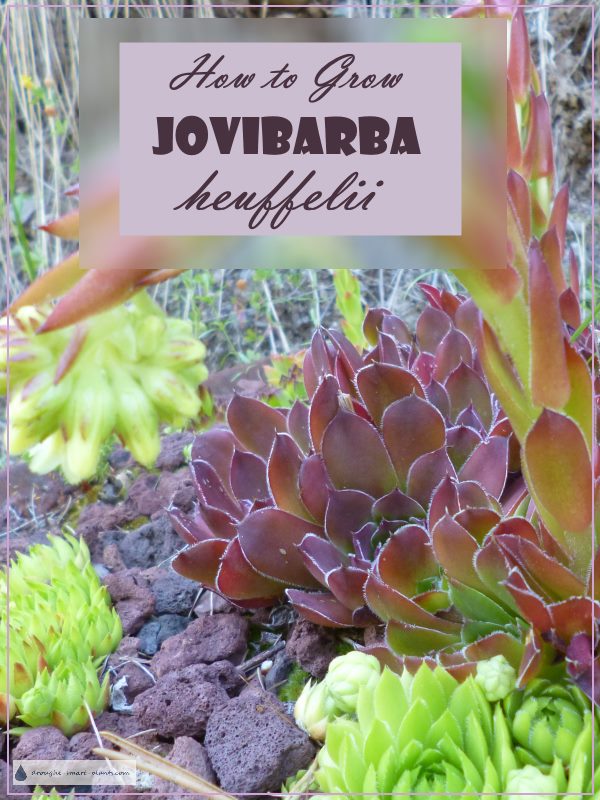
Pronounce this odd species like this; joe-vi-bar-ba hoo-fell-ee-eye.
The way this species grows is unique among all the Jovibarba species.
Instead of forming chicks, or propagules that can be removed for propagation, Jovibarba heuffelii split at the crown of each rosette, resulting in a clustering effect as each one splits over successive seasons into a colony.
Every year, the mature rosettes can split into two, five or more new crowns.
Propagation of the Jovibarba heuffelii has to be done surgically to produce more identical clones – if left to their own devices, the crown splits into more new plants every year, creating a mounding cluster of lush color and texture.
This fact explains why these plants are so rare and expensive to buy.
How to grow more Jovibarba heuffelii
Surgically by division…
To start propagating, a sharp blade, knife or scalpel is essential.
Dig up the clump to be split, and remove most of the soil from the roots.
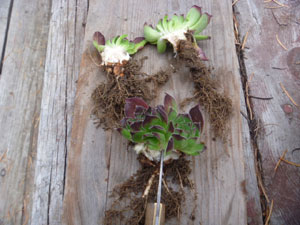
Each crown will have a long fairly thick caudex, and one to several fleshy taproots, and many smaller root hairs, so determine where you can cut so that each new piece has at least part of the larger roots and several smaller ones.
Carefully cut down between the crowns.
It’s best to simply start the cut with the blade then tear it carefully the rest of the way to separate the crowns. The torn surface will heal faster than a cut surface.
The texture of the roots is similar to a wilted carrot and fairly soft so it’s easy to pull apart. See more about this delicate procedure here.
Now comes the counter intuitive part – to prevent rot from setting in, each piece must dry considerably so that the cut surfaces callous.
If this isn’t done, the plant pieces may still root, but run the risk of simply rotting in contact with the soil.
Allow the cut surfaces to dry for at least a day or so, until you can see signs of healing, then plant the new plants into a well drained porous soil mix.
I use Sunshine Mix #4, but use whatever is available – if you have access to small gravel or chicken grit, add some to your mix, or pumice, small grade lava rock or turface (sometimes called oil dry, turface is a clay product which is fired to produce small pellets.)
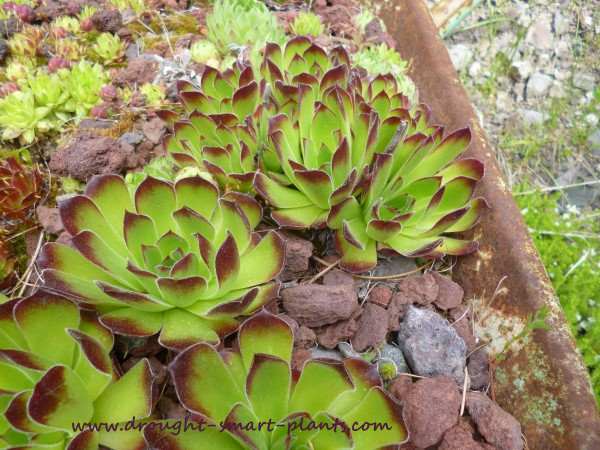
Jovibarba heuffelii can also be seed propagated, but this will result in a hybridized mixture of genetically different plants, possibly showing some traits from the parent plants, or sometimes surprise characteristics.
All named varieties start this way, sometimes as accidental crosses, others as scientific experiments to produce superior types of plants.
Once the mature rosettes reach a certain size in their second or third year some will be triggered to start blooming. The center of the rosette starts to cone, and a flower stalk elongates over several weeks, until finally blooming with pale yellow or cream flowers.
Successive flowers open over the next two months, attracting many pollinators to transfer the pollen from flower to flower.
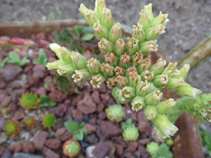
Eventually, the papery petals will brown, leaving the seed capsules.
Cut them off and put them into a paper bag to allow them to finish drying. The seeds will be released from the pods and be caught in the bag. Store these over the winter in a dry place.
In the spring, sow the dust like seeds in shallow trenches in an open flat filled with sterile soilless mix such as Sunshine Mix #4 or Pro Mix, don’t cover the seed and mist lightly until they germinate. An alternate method to try is winter sowing, with nature doing most of the work.
A dome or clear cover can help keep the air around the germinating seeds humid – dump off any condensation from the inside of the cover as the large droplets that form can induce rotting in the seedlings.
Take the cover off in stages: one week after most of the seeds have germinated, take the cover off for a few hours each day, then a week later take it off all day, then off entirely.
This gradual change in humidity will ‘harden off’ the seedlings until they can face the harsh world outside. A similar change into brighter light will encourage robust hardy growth, as will a reduction in moisture.
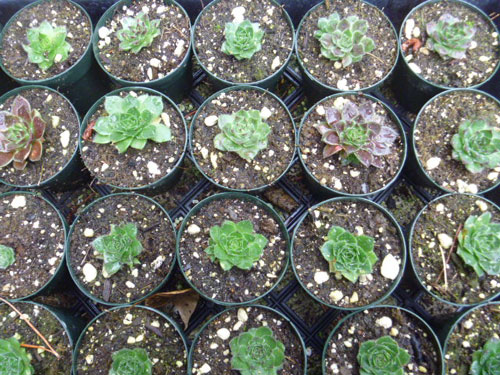
The seedlings are tiny and may take several months to attain a size big enough to transplant into separate pots.
As the fall arrives, you’ll be able to note the changes that they go through and see the many forms and colours start to show.

